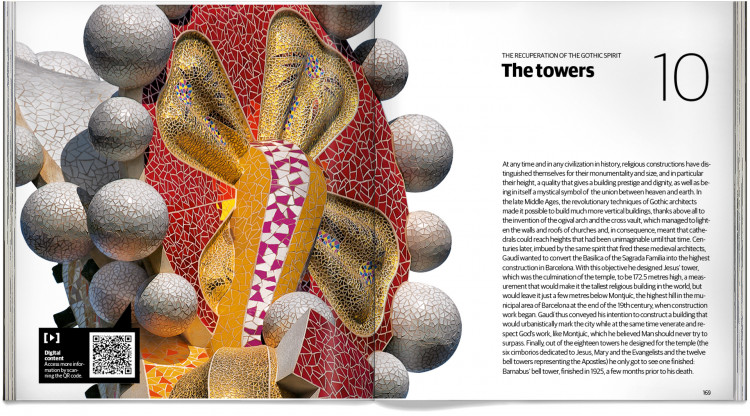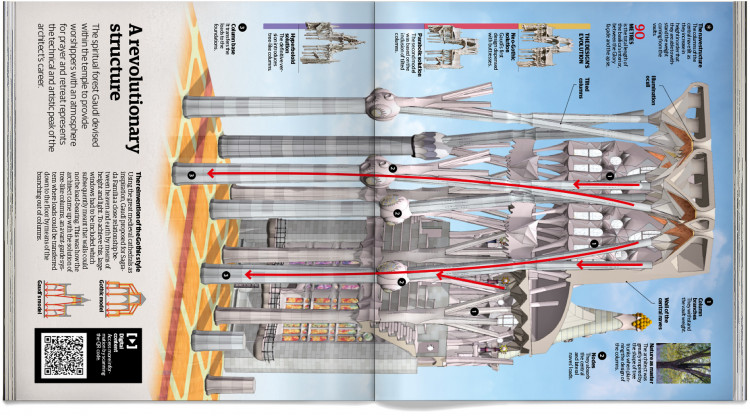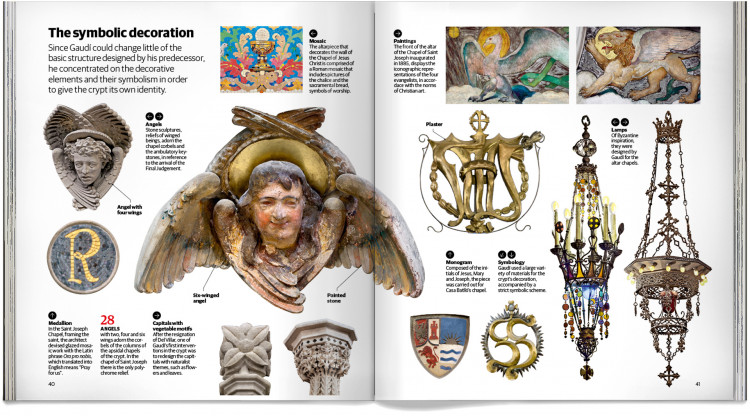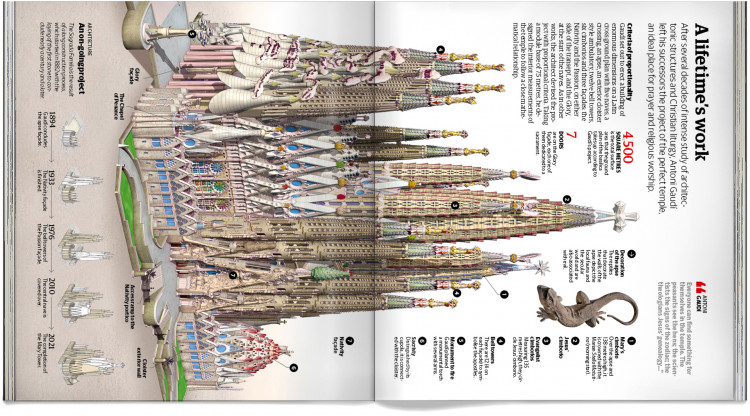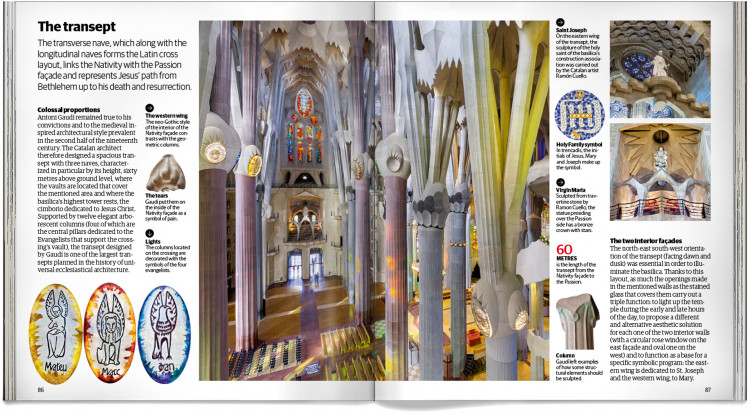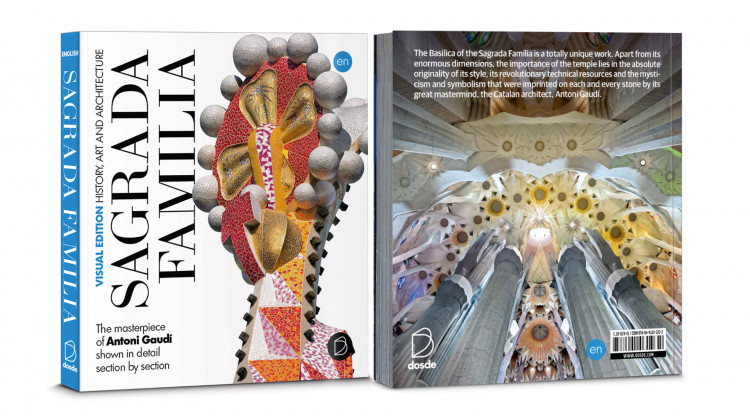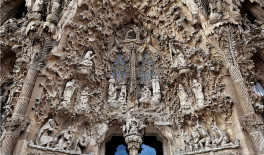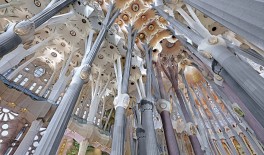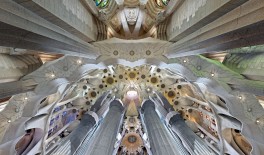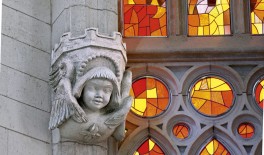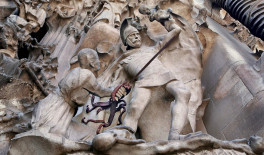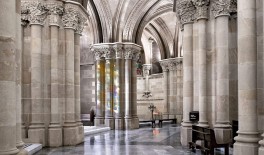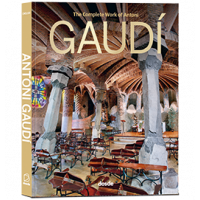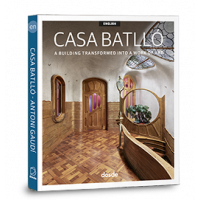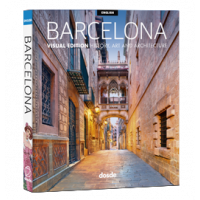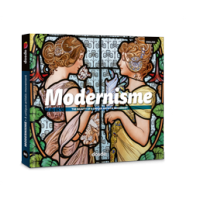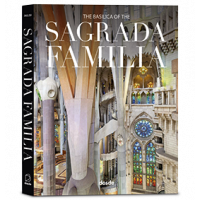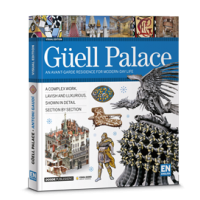The basilica of Sagrada Familia
A temple converted into a universal work of art
About the book The temple of the Sagrada Familia
Gaudí dedicated 43 years of his life to the Sagrada Familia, from 1883, when he took on the commission to supervise the construction of the temple, until 1926, when he was knocked down by a tram. Because of the duration of the project he was able to incorporate all the structural innovations he had developed during his career. Likewise, each of the elements of the temple –which was declared a World Heritage Site by Unesco in 2005– contains a complex, symbolic framework, a reflection of the indepth knowledge of Christian liturgy that Gaudí acquired after several decades of intense study.
This book completely focused on the Sagrada Familia –known by some as “Gaudí's cathedral”–narrates the long history of the project, while at the same time delving into the diverse architectonic and iconographic elements designed by Gaudí, who imagined his work as a symbolic connection between heaven and earth. Published by Dosde, it is one of the numerous books about Gaudí that we have edited.
Visual Edition
The basilica of Sagrada Familia
It includes exclusive digital content
Made with environmentally friendly paper
Official licensed product
Multilanguage: Available in 9 languages
About the book The temple of the Sagrada Familia
Gaudí dedicated 43 years of his life to the Sagrada Familia, from 1883, when he took on the commission to supervise the construction of the temple, until 1926, when he was knocked down by a tram. Because of the duration of the project he was able to incorporate all the structural innovations he had developed during his career. Likewise, each of the elements of the temple –which was declared a World Heritage Site by Unesco in 2005– contains a complex, symbolic framework, a reflection of the indepth knowledge of Christian liturgy that Gaudí acquired after several decades of intense study.
This book completely focused on the Sagrada Familia –known by some as “Gaudí's cathedral”–narrates the long history of the project, while at the same time delving into the diverse architectonic and iconographic elements designed by Gaudí, who imagined his work as a symbolic connection between heaven and earth. Published by Dosde, it is one of the numerous books about Gaudí that we have edited.
Videos The basilica of Sagrada Familia
Readers opinions
(11)
Reviews
(11)
Readers opinions
(11)
Additional Information
- Additional Information
- Subtitle: A temple converted into a universal work of art
- Weight (g): 550
- Binding: Paperback with flaps
- Size (cm): 17,5 x 19,5
- Author: Dosde
- Pages: 0
- Edition: Visual Edition
The history of the Sagrada Familia in Barcelona
The construction of the Temple of the Sagrada Familia started in 1882 on a site in Barcelona’s new Eixample. After the resignation of its first architect, Francisco de Paula del Villar, a young architect aged 31 called Antoni Gaudí took on the reins of the project.
Gaudí devised a temple of enormous dimensions that symbolised the connection between heaven and earth. The basilica was planned to be the highest construction in the city and to bring the work closer to God. Using the great medieval cathedrals as inspiration, Gaudí proposed for Sagrada Familia the reinterpretation of the Gothic style as a necessary concept in order to establish a close relationship between heaven and earth by means of height and light.
Gaudí incorporated in the Sagrada Familia all the structural solutions that had he had been developing throughout his career as an architect. At the time of his sudden death, in 1926, aged seventy-three, only the crypt, apse, cloister, Nativity façade and four towers had been built. After having been held up for almost three decades, construction work started up again in 1954 and its construction still continues today. Gaudí managed to combine his faith and his artistic genius to transform the Sagrada Familia into a universal masterpiece.
A visit to Sagrada Familia
Despite being limited to the moderate dimensions of a block in the Eixample, the temple designed by Gaudí reaches extraordinary magnitudes, especially in height.
Gaudí wanted to redraft the neo-Gothic style of his predecessor with a different approach leaning towards naturalism, where animals and plants would invade the work. Both the exterior and the interior of the temple incorporate numerous elements inspired by nature. In fact, Gaudí planned the interior of the Sagrada Familia as an enormous spiritual forest to provide worshippers with a place fit for prayer and retreat inside the temple, which represents the technical and artistic peak of his architectural career.
Visiting Sagrada Familia allows one to take in the technical perfection that Gaudí achieved when designing the temple, converted into Barcelona's icon of Modernisme.

